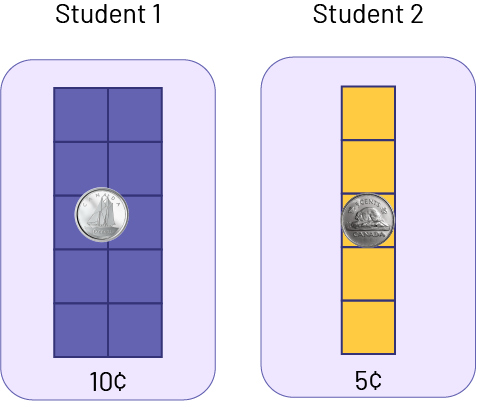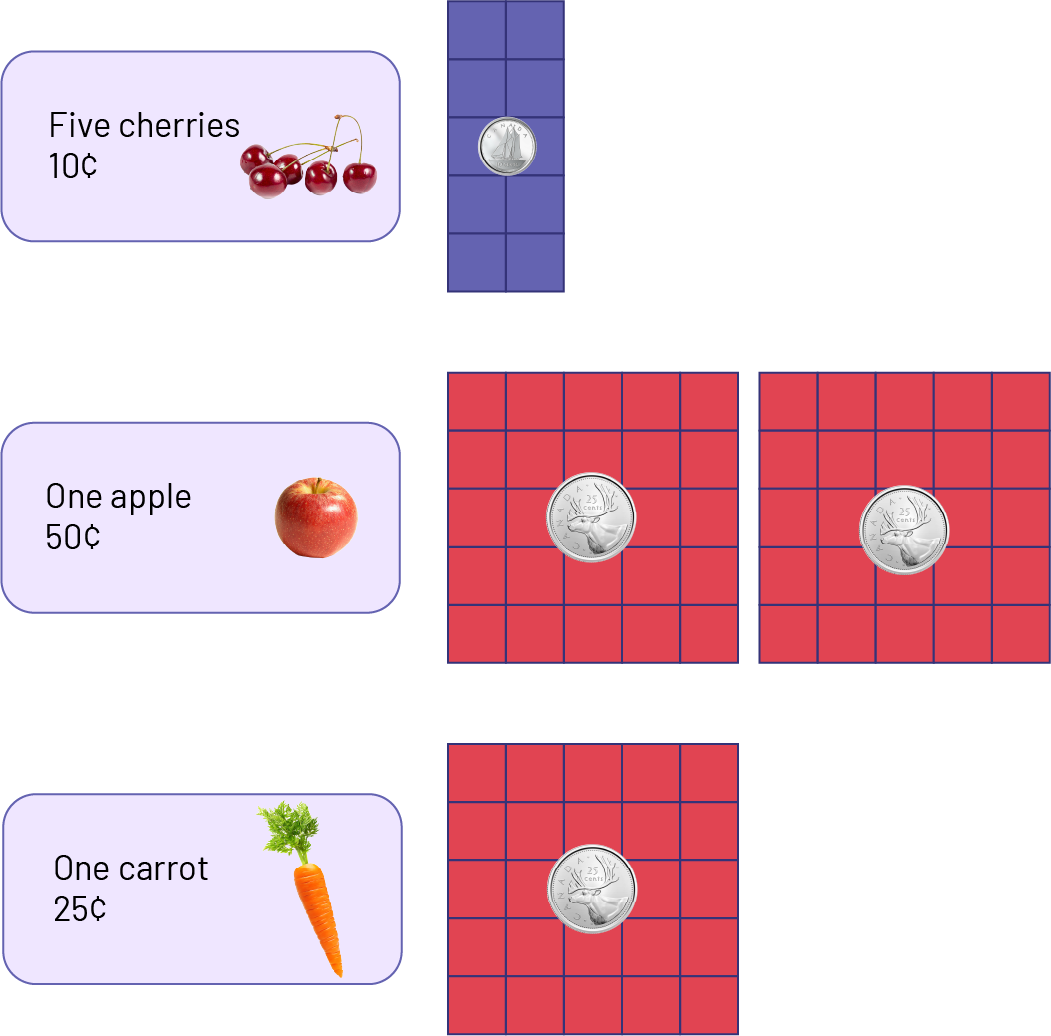F1.1 Identify the various Canadian coins up to 50¢ and coins and bills up to $50, and compare their values.
Activity 1: High Card
Use Appendix 3 to prepare several sets of approximately 20 to 30 cards each, with one set representing values less than $1 (nickels, dimes, and quarters) and the other set representing values of $1 and more (loonies, toonies, $5, $10, $20, and $50).
Ask students to form groups of two. Distribute the sets of cards randomly and ask that one student from each pair deal the cards into two equal piles. To play, the students will turn over their cards and state the value represented. The player who has the card representing the highest value and can state why it is higher wins both cards. The game continues until there are no more cards.
Example

Student 1 says, "I have 10¢."
Student 2 says, "I have 5¢."
Then, student 1 says, "10¢ is worth more than 5¢ since 10¢ is equal to two nickels."
Activity 2: The Fruit and Vegetable Stand
Begin by creating lists of 5 to 8 fruits and vegetables which include pictures. Next, assign prices (values); create one list with cent values (e.g., cherries are worth 10¢, apples 50¢, carrots 25¢ and so on) and one list with dollar values. Then distribute a set of play money that groups will use to represent the value of each of the fruits and vegetables they have on their list and write down their observations. They can then compare the prices of the fruits and vegetables on their list. Groups can experience the activity more than once by swapping lists from group to group.
Example

Five cherries, ten cents. Accompanied by a photo of cherries. Represented by ten squares and one ten cents. An apple, 50 cents, accompanied by a picture of an apple. Represented by two 25 cent coins, and two times a block of 25 squares. A carrot 25 cents. Accompanied by a photo of carrots. Represented by a 25 cent coin and a block of 25 squares.
The group represents the price of the items with play coins and bills. An apple is worth more than 5 cherries because 50¢ is more than 10¢. It takes five 10¢ coins to make 50¢.
